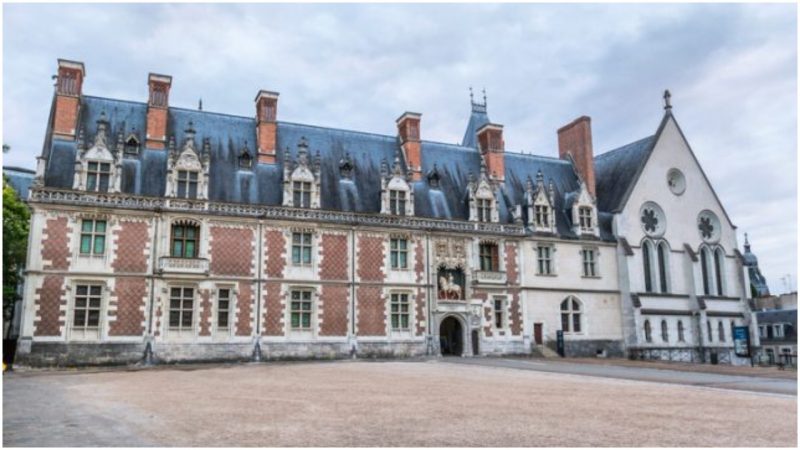Blois is one of the most beautiful cities in the Loire Valley in France. In its center rises the Château de Blois, renowned for its magnificent architecture and long history. The castle had been the residence of seven kings and ten queens of France, so its grandeur is unsurprising.
What is most interesting, however, is the exterior of the castle. It looks nothing like the other fairytale castles of the Loire Valley. Château de Blois has a unique architecture: The owners would continuously expand the castle, according to their wishes, which resulted in constructing several wings in different styles that were fashionable at the time. The wings were never completely rebuilt in one architectural style, meaning they still have their original form, giving the castle its signature look.
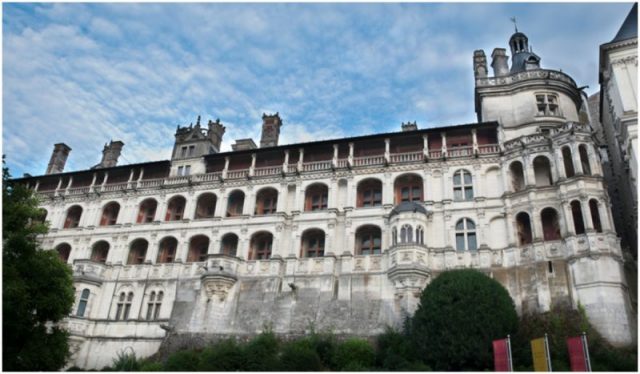
The castle was not always a royal residence. The first construction on the site was a citadel dating to the 6th century, which the Counts of Blois turned into a medieval fortress in the 9th century. They became one of the most wealthy and powerful families in the region. As their fortune increased, so did the development of the castle. However, during the Hundred Years’ War, the Counts of Blois lost their castle, and it became royal property. Luckily, the medieval constructions of the Counts of Blois are visible today. The best-preserved are the tower overlooking the Loire Valley and the Salle des Etats Généraux, which is the oldest hall in the country.
One important event for all of France took place in the castle in 1429. Joan of Arc visited the castle, to be blessed before she defeated the English at Orleans.
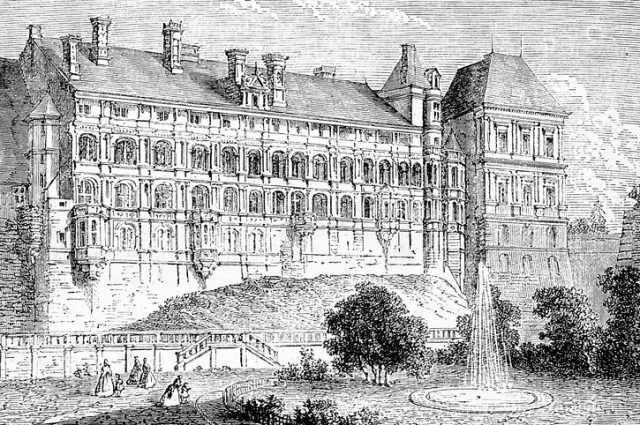
After the end of the Hundred Years’ Wars, the royals planned the restoration of their residences. It was Louis XII who initiated the new improvements of Château de Blois. The king was born in the castle in 1462 and always favored it over the other castles. He intended to move the Court of France to the castle and so he needed to make his residence fit for a king. The construction of the new wing and garden were in the Renaissance style.
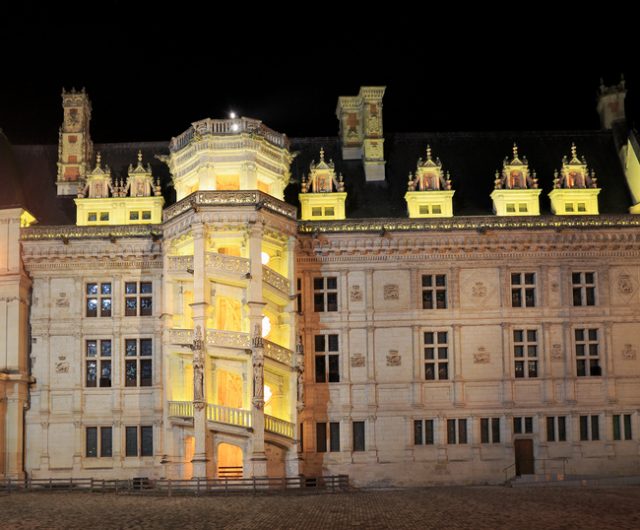
In 1515, King Francis I and Queen Claude continued to enlarge the castle. They built a new wing which at the time housed the most important library in France. There are 75 staircases in the castle, and though they are all beautiful, none is comparable to the spiral staircase in front of this wing. Its design is influenced by the Italian Renaissance style and among the decorations are salamanders, the emblems of the king. The garden was improved according to the designs of the Italian landscape designer Pacello Da Mercoliano. Queen Catherine de Medici and her sons, Francis II, Charles IX, and Henry III, also used this wing as a residence at various times in their lives.
In the 17th century, Queen Marie de Médici, as well as her son Gaston d’Orléans, were exiled to the castle. Gaston d’Orléans initiated the construction of another wing supervised by the architect Mansart. Its design was influenced by the architecture of classical antiquity. Also, he created the first botanical garden in the castle, which included approximately 2,300 species.
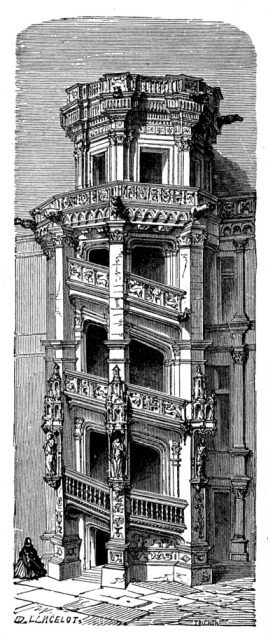
After the death of Gaston d’Orléans, the castle and its gardens were neglected. During the French Revolution, it was saved from destruction only because it was handed over to the army. In 1841 the restoration of the castle began under the supervision of the architect Félix Duban, while the gardens were restored to splendor in 1992 with the help of landscape designer Gilles Clément.
Related story from us: Bats act as pest control at the library of the Palace of Mafra in Portugal
During the restoration, the Museum of Fine Arts was created in the castle; it today counts approximately 35,000 artworks, including remarkable pieces from the 16th and 17th centuries. Château de Blois has 564 rooms and although not all are open to the public, the royal apartments, the most lavishly decorated, certainly are. The castle is one of the most beautiful in France and has been recognized as a National Monument since 1841.
